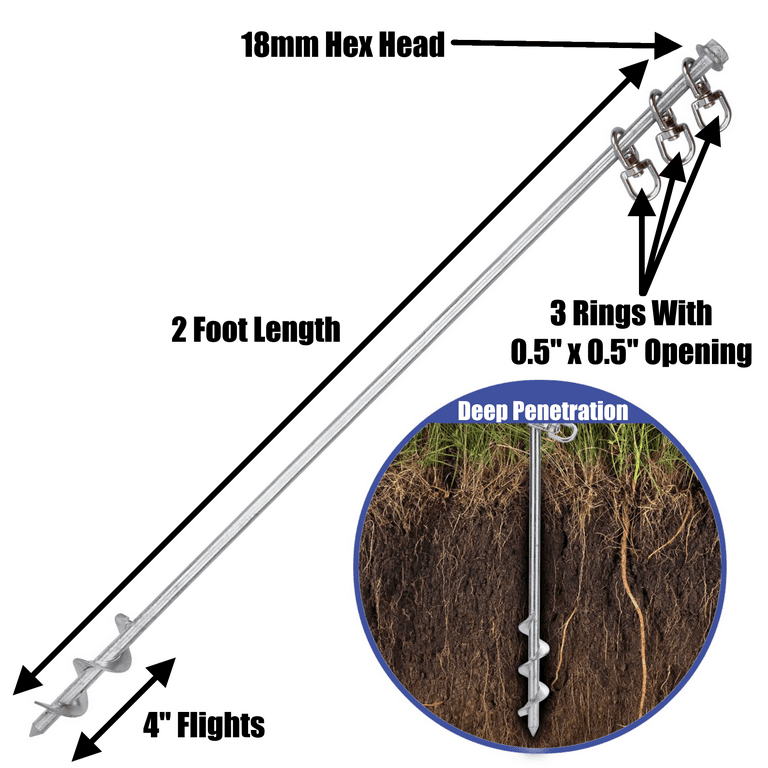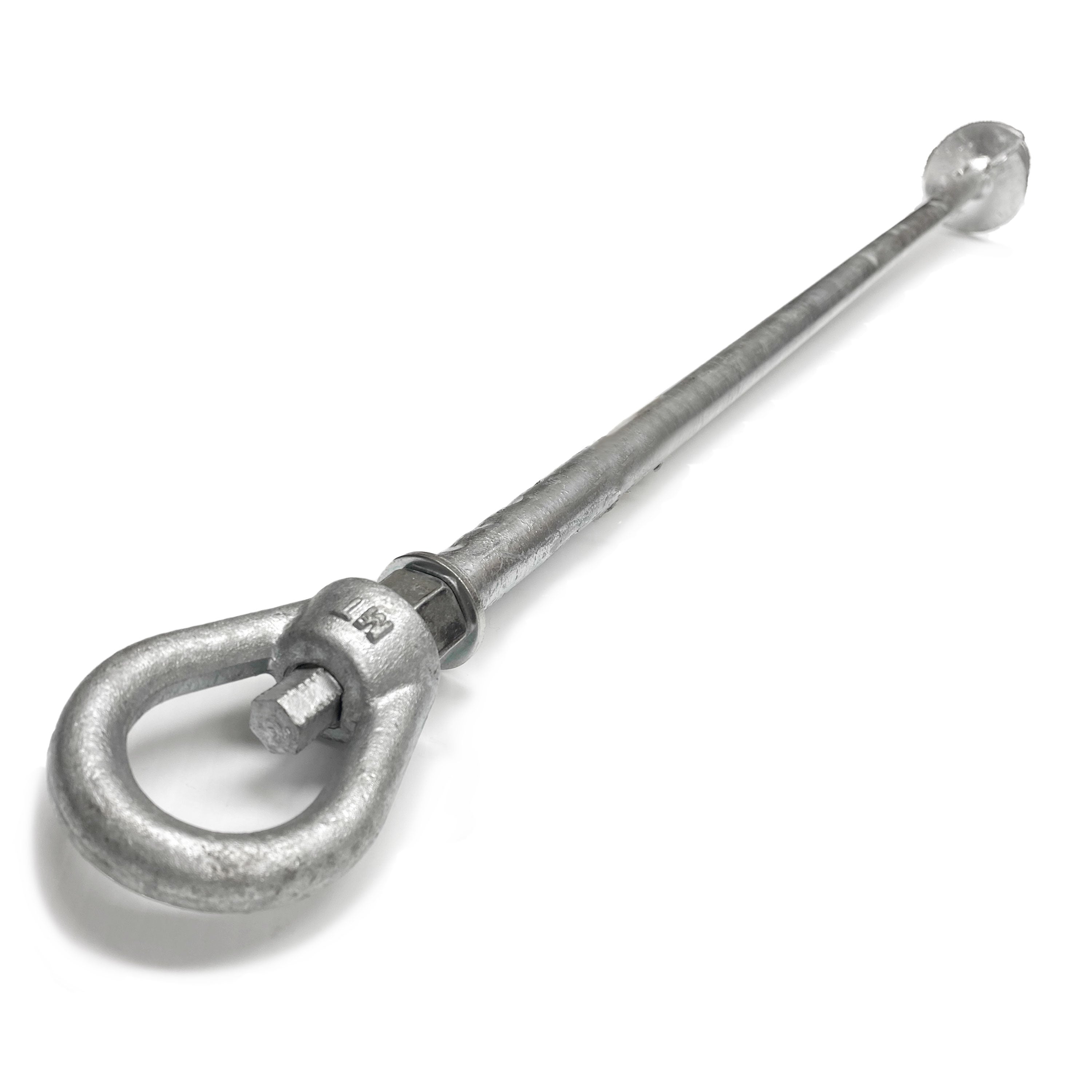Common Mistakes When Using a Ground Anchor for Your Property
Common Mistakes When Using a Ground Anchor for Your Property
Blog Article
Discover the Different Sorts Of Ground Support for Your Next Task
When beginning on a building and construction or landscape design job, recognizing the various kinds of ground supports readily available is important to guaranteeing both stability and sturdiness (Ground Anchor). From auger anchors, which excel in diverse soil conditions, to risk anchors created for short-term installations, the options are countless. In addition, concrete and screw supports existing special benefits in certain situations, while deadman supports are tailored for applications requiring resistance to lateral pressures. The option of an appropriate anchor type can significantly influence the overall success of your job, triggering more exploration right into their particular benefits and applications.

Auger Anchors
Auger anchors are a popular choice in various building and construction and landscape design tasks due to their special layout and efficient anchoring capacities. These anchors include a helical screw-like shaft that is driven right into the ground, permitting a safe and stable hold. The spiral style assists in simple setup and makes best use of resistance versus lateral forces, making auger anchors particularly reliable in applications such as fence, short-lived frameworks, and disintegration control.
The setup procedure of auger anchors is relatively uncomplicated. Auger anchors can be easily eliminated and recycled, which adds to their cost-effectiveness and sustainability.
One of the significant advantages of auger anchors is their ability to disperse lots evenly across the surrounding dirt, reducing the risk of soil disruption and lessening ecological effect. In addition, they are less prone to heaving or loosening up with time contrasted to conventional anchoring techniques. Auger anchors are an exceptional option for tasks requiring dependable and sturdy anchoring solutions.

Risk Anchors
When it pertains to protecting structures in a variety of exterior applications, risk anchors offer a simple and reliable service. These supports are generally created from durable products such as steel or light weight aluminum, made to endure environmental stresses while providing optimum stability. Their simple style permits for fast setup, making them a perfect option for long-term or momentary anchoring demands.
Risk supports are especially useful in securing tents, canopies, and other lightweight structures versus wind and weather condition. They work by being driven into the ground at an angle, creating a strong hold that withstands pull-out pressures - Ground Anchor. The effectiveness of risk anchors depends on a number of variables, including dirt kind, wetness content, and the angle of setup
For included safety, lots of risk supports feature attachment factors for bands or ropes, permitting for tension modifications as essential. In applications such as landscaping or building, they can efficiently stabilize tools or structures on unequal surface. Overall, risk anchors supply a affordable and functional option for protecting numerous outside installments, making them a favored selection for service providers and DIY enthusiasts alike.
Concrete Anchors
Concrete anchors give a robust solution for safeguarding frameworks to concrete surfaces, making certain security and safety and security in numerous applications. These supports are necessary for jobs varying from property building and constructions to massive industrial installments. They come in various types, consisting of development a knockout post anchors, glue supports, and undercut supports, each developed for particular tons requirements and environmental conditions.
Glue supports use high-strength epoxy or material to bond the anchor to the concrete, providing superior load-bearing abilities, especially in fractured concrete scenarios. Undercut anchors develop an one-of-a-kind form within the concrete, providing phenomenal holding power, especially in applications where tensile tons are common.
When implemented correctly, concrete anchors substantially improve the architectural honesty of different projects, making them essential in modern-day building and construction techniques. Comprehending the certain needs of your project will aid in selecting the best type of concrete support for the task.
Screw Anchors

Screw supports are a flexible securing option that click reference can be efficiently used in a variety of applications where traditional concrete anchors may not be sufficient. These supports include a helical layout that allows them to be quickly driven right into the ground, making them optimal for use in dirt and other substrates. Their special structure provides exceptional holding power and resistance to pull-out forces, making them suitable for countless projects, from landscaping to structural assistance.
Among the primary benefits of screw anchors is their convenience of installation. They require very little tools and can frequently be installed without the requirement for excavation, which conserves both time and labor expenses. Additionally, screw supports can be gotten rid of and recycled, using a lasting service for short-term applications.
Screw anchors are particularly advantageous in areas where soil conditions are challenging, such as loose or sandy soils. Their ability to be set up at differing midsts permits customization based upon particular task needs. On the whole, screw anchors provide a reputable and reliable anchoring approach, making them an excellent option for specialists and designers looking for efficient solutions for their jobs.
Deadman Anchors
Deadman anchors work as a robust solution for maintaining frameworks in tough conditions, particularly where traditional securing methods might fall brief. These anchors include large, hefty objects hidden underground, which develop resistance versus side pressures. The style usually involves a straight element, such as a block of concrete or a metal plate, buried in the soil, to which straps or cable televisions are attached.
The effectiveness of deadman anchors depends on their capability to disperse tons over a bigger area, reducing the danger of failure in unstable dirt conditions. They are particularly valuable in applications such as preserving walls, momentary frameworks, and incline stablizing, where soil movement can endanger the honesty of the click to read framework.
Installation of deadman supports calls for careful planning to guarantee they are placed at the proper deepness and positioning, maximizing their load-bearing ability. While they may need more labor and material than lightweight supports, their integrity in damaging problems makes them vital for long-term projects. Deadman supports are flexible and can be adjusted to different applications, making them a best choice for engineers facing distinct difficulties in their jobs.
Verdict
Auger anchors succeed in varied soil conditions, while risk anchors match short-lived applications. For concrete surfaces, development and adhesive supports provide dependable choices, and screw anchors use convenience in challenging surfaces.
Furthermore, concrete and screw anchors existing distinct advantages in certain scenarios, while deadman anchors are customized for applications calling for resistance to side pressures - Ground Anchor.Auger anchors are a preferred option in numerous construction and landscaping jobs due to their unique style and reliable securing capabilities. They come in various types, consisting of development anchors, adhesive anchors, and undercut supports, each designed for specific load demands and ecological problems
Adhesive anchors make use of high-strength epoxy or resin to bond the support to the concrete, using exceptional load-bearing capacities, particularly in split concrete circumstances. In general, screw anchors give a effective and reliable anchoring approach, making them an excellent selection for designers and specialists seeking reliable solutions for their projects.
Report this page